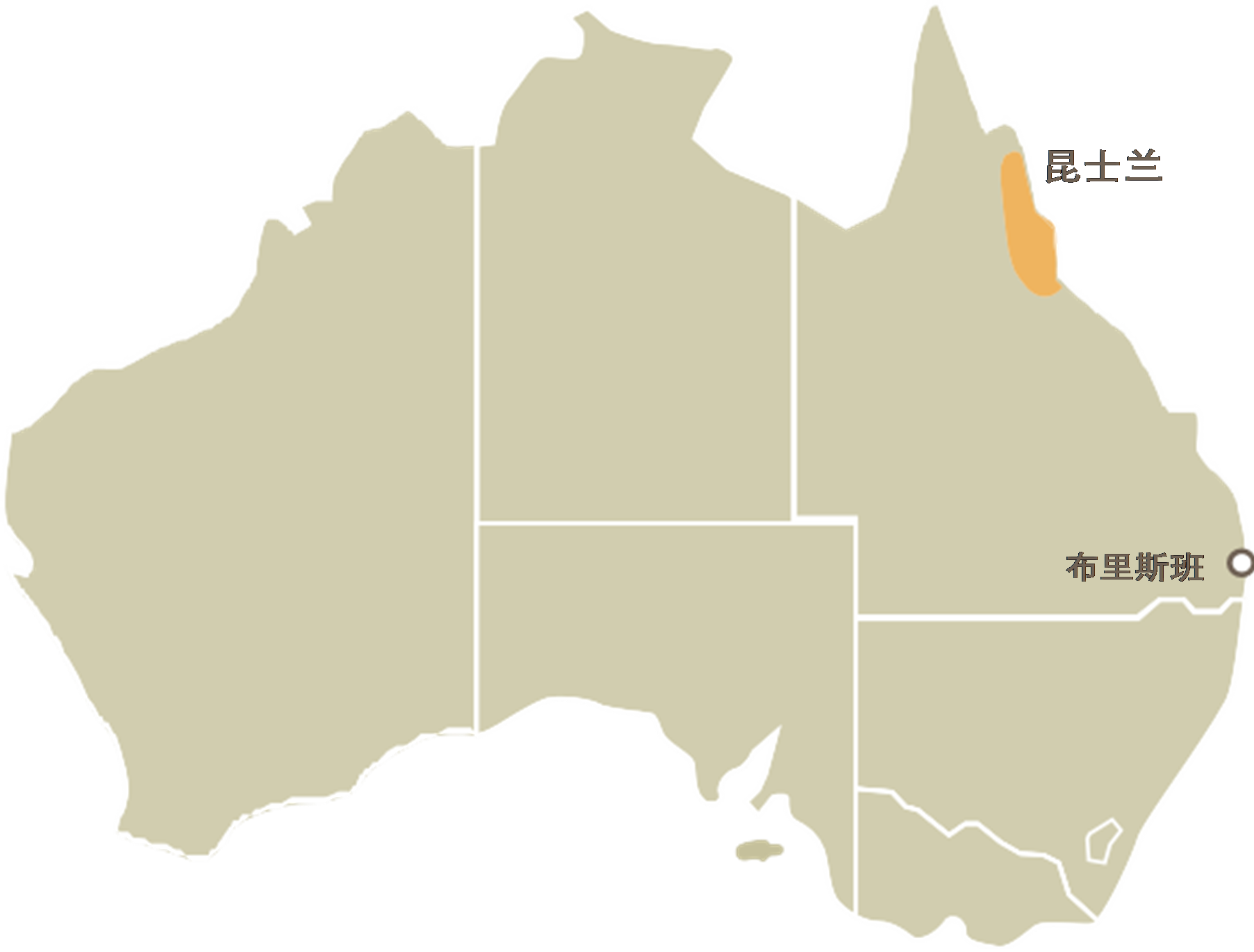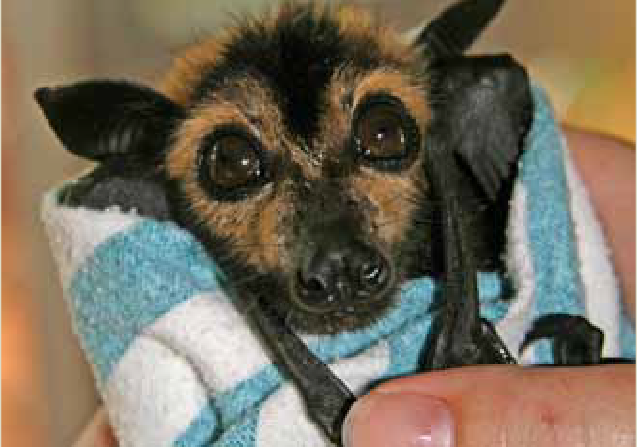Wet Tropics
昆士兰湿热带

The story of earth’s evolutionary history continues to unfold in the world’s oldest continuously surviving rainforest: the Wet Tropics of North Queensland, Australia. Nature’s true masterpiece, a living exhibition, the Wet Tropics tells the story of how plants and animals have evolved across time. Situated on the north east coast of Queensland, the Wet Tropics is a mega diverse environment with the greatest variety of plants and animals found anywhere in Australia, many of which are found nowhere else in the world. It is also a significant meeting point, with the two World Heritage Areas of the Great Barrier Reef and the Wet Tropics meeting alongthe Daintree coast.The rainforests of the Daintree contain outstanding examples of flora and fauna that represent eight major stages in the earth’s evolutionary history.
WORLD HERITAGE WET TROPICS: LIVING EXHIBITION OF ANCIENT TIMES
Crowned with World Heritage status in 1988, the Wet Tropics is a place that links past and present. It is a major evolutionary centre for the world's rainforest flora and fauna, offering a living record of the ecological and evolutionary processes that have shaped Australia's fauna overthe past 415 million years. Continental drift, fragmentation and the cycles of climatic change have driven the processes of speciation, extinction and adaptation. The rainforests of the Wet Tropics, in particularthe Daintree region, have more plants and animals with primitive characteristics than anywhere else on earth. Hometo half of Australia's bird species, one third of the continent's mammals and over 3,000 plant species, it is also a crucial habitat for rare and threatened species including the spectacular, flightless Southern Cassowary and the elusive tree kangaroo. The Wet Tropics is an area of captivating natural beauty, described by Sir David Attenborough as "the most extraordinary place on earth".
DISCOVER THE OLDEST RAINFOREST CULTURE IN THE WORLD
The human story of the Wet Tropics can be seen through the eyes of the local Indigenous people. Within the boundaries of the World Heritage Area there are eighteen Rainforest Aboriginal tribal groups who have ongoingtraditional connectionstothe landscape dating back60,000years.This incredible cultural timeline reaching backthrough hundreds of generations means Wet Tropics Rainforest Aboriginal people are the oldest rainforest culture in the world. Today, the Wet Tropics continues to evolve as a 'living' cultural landscape, created duringthe ancestral creation period known as the ‘Dreamtime.' Natural features are interwoven with Rainforest Aboriginal people's religion, spirituality, economies and social and moral organisation to createthis rich cultural landscape, which is an essential resource forfood, medicine, culture and tools.
HIGHEST RAINFALL IN AUSTRALIA
During summer months, the Wet Tropics experiences the highest rainfall in Australia. This is the best time to witness the majesticthundering waterfalls plummeting down deep rainforest gorges on the Waterfall Circuit that encompasses the dramatic Millaa Millaa Falls and captivating Josephine Falls. Waterfalls are often biodiversity hotspots and lucky visitors may glimpse a dazzling blue Ulysses butterfly, brilliant rainbow lorikeet or scaly breasted lorikeet. Less vividly coloured, but equally as interesting are the little musky rat kangaroos, the smallest and most primitive of macropods and of considerable evolutionary significance.
THE DINOSAUR BIRD
The Southern Cassowary is an icon of the Wet Tropics. When one appears,you might beforgiven forthinkingyou've come face-to-face with a dinosaur! The vivid purple blue neck, drooping red wattles and amber eyes of this large flightless bird dramatically contrast with its glossy black plumage. Cassowaries also have a tall brown casque (helmet) on their heads, which scientists believe helpsthem hear low-frequency sounds over long distances, an ability shared with elephants and some dinosaurs. These birds are endangered and there is still much we don't know about cassowary populations.
GO BATTY!
Bats playa critical role in helpingto pollinate plants and spread seeds, and are vital to the health of the Wet Tropics rainforest and neighbouring ecosystems.
昆士兰湿热带
地球进化史的故事在世界上现存最古老的雨林中上演:这就是澳大利亚昆士兰北部的湿热带地区。这片地区讲述了历史长河中动植物进化的故事,是大自然真正的杰作,是有关生物的生动展览。 位于昆士兰东北海岸的湿热带地区是一个巨大的多样性环境区域,拥有澳大利亚最丰富的动植物,其中许多是当地独有。这也是两个世界遗产区——大堡礁和湿热带在黛恩树海岸的重要交汇点。黛恩树的热带雨林包含了地球进化史上八个主要阶段动植物的典型代表。
世界遗产昆士兰湿热带:远古时代的生动写照
1988年,湿热带地区被列为世界遗产,这是一个连通过去和未来的地方,是世界雨林动植物的主要进化地,为过去4.15亿年来塑造澳大利亚动物群的生态和进化过程提供了生动的记录。大陆漂移、分裂和气候变化的周而复始驱动了物种的形成、灭绝和适应。 湿热带的雨林,特别是黛恩树地区的雨林,拥有更多具有原始特征的动植物。澳大利亚有一半的鸟类,三分之一的大陆哺乳动物和3000多种植物在这里安家,这里也是稀有濒危物种的重要栖息地,其中包括不会飞行的南鹤鸵和隐居的树袋鼠。 湿热带地区拥有迷人的自然美景,被大卫阿滕伯勒爵士称为“地球上最特别的地方”。
澳大利亚最高降水量
夏季,湿热带降雨量最高,雷鸣瀑布沿着热带雨林峡谷飞流而下,是观赏雄伟风景的最好时机。可观赏地点形成了瀑布环线,其中包括激动人心的米拉米拉瀑布和摄人心魄的约瑟芬瀑布。瀑布往往是多样生物栖居的热门区域,游客可有幸看到令人眼花缭乱的蓝色尤利西斯蝴蝶、绚丽的虹彩吸蜜鹦鹉或鳞胸吸蜜鹦鹉,还会看到颜色没那么鲜艳,但一样有趣的麝香鼠,它是袋鼠科之中最小最原始的物种,具有很高的进化研究意义。
恐龙鸟
南鹤鸵是昆士兰湿热带的标志。当您有幸遇到它的时候,您甚至会觉得自己遇到了一只恐龙!这种大鸟不会飞,拥有显眼的紫蓝色脖子,下垂的红色肉垂和琥珀色的眼睛与它光滑的黑色羽毛形成了鲜明的对比。南鹤鸵头上长有棕色的高骨甲(盔),科学家认为这能帮助他们听到远距离低频声音,这是大象和一些恐龙的共同能力。这些鸟类濒临灭绝,而我们对南鹤鸵种群还知之甚少。
飞吧,蝙蝠!
蝙蝠在帮助植物授粉和传播种子方面发挥着关键作用,对湿热带雨林和邻近生态系统的维持至关重要。



